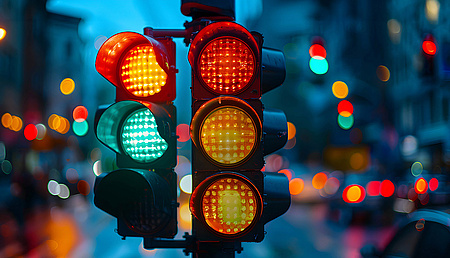
Trademarks and global rebranding
Times change, and tastes often change with them. When fortunes begin to ebb, rebrands can breathe new life into a commercial enterprise, strengthening customer loyalty, unlocking opportunities in new markets and revitalizing sales and marketing strategies. Yet, reaching for these benefits does not come without substantial risk, and the process can also bring significant complexities, especially for businesses operating across various jurisdictions.
Where other corporate activities, such as initial public offerings and mergers and acquisitions, draw the scrutiny of those intellectually invested in a particular business space, a rebrand is, by its nature, publicly directed. Consequently, such endeavors live or die according to how they are received by the target audience and, secondarily, by the wider public.
The latest high-profile company to make headlines with its restyling efforts is luxury car maker Jaguar, a part of Jaguar Land Rover (JLR) Automotive, which also produces the Land Rover and Range Rover lines. While retaining the iconic name, the British brand has gambled on a bold new identity. The updated logo introduces a stylized "JaGUar" figurative mark, pairing upper and lower case letters alongside a more muted "leaper" emblem. Accompanying the visual updates is a new slogan, "Copy Nothing," emphasizing originality and innovation while harking back to founder Sir William Lyons' ideal that: "A Jaguar should be a copy of nothing."
A promotional video released on November 19, 2024, highlighted these themes of unorthodoxy and individuality, featuring models in avant-garde attire. Notably absent from the video, however, were any vehicles, a creative choice that sparked mixed reactions online, including no shortage of incendiary conversations. When the Type 00 was showcased at Miami Art Week a fortnight later, laudatory voices mingled with a deluge of sarcasm and derision, with the electric car's design being compared to vehicles from the Pink Panther cartoon and Thunderbirds, as well as a toaster and a luxury coffin. Regardless, the launch of the new brand identity successfully generated the desired buzz, getting people talking and engaging.
Yet that hype will have to do some heavy lifting for what is seen as JLR's most tenuous constituent. Seeing how the British luxury brand's sales have declined from 180,000 in 2018 to just 33,320 last year, any publicity may indeed be good publicity. As the Jaguar example shows, companies invest considerable time, money and customer goodwill in rebrands – and place even more of the same on the line. Design and advertising agencies work closely with in-house teams to create an evolved brand image that reflects a business's essence and resonates deeply with customers, mindful of the risk of alienating the existing consumer base.

Any rebranding initiative is a delicate negotiation between how the business wishes to be perceived and what existing and prospective customers will be receptive to. A marketing agency can help provide an unbiased view, but in-house fine-tuning will likely be required.
Therefore, this investment must be accompanied by a comprehensive Intellectual Property (IP) strategy. Mistakes or oversights in protecting the IP associated with the rebrand could lead to legal conflicts, adverse public relations and the loss of rights. When undertaking a market makeover, IP counsel should coordinate closely with other departments and external partners from the outset. This proactive approach ensures that key IP priorities – such as trademark registration, copyright protection and domain acquisition – are identified and thoroughly addressed, safeguarding the brand's integrity and maximizing its long-term value.
Global search and clearance
Trademark protection is crucial during a rebranding process to ensure that the new commercial identity is legally secure in all principal markets and can be fully leveraged without infringement risks. Conducting availability searches and clearances can help identify any earlier trademark rights that might conflict with the new brand; this should be done in the core markets, meaning, with a global venture like Jaguar, this may have to be done in all major jurisdictions worldwide. If conflicts arise, businesses may need to take steps such as negotiating coexistence agreements, overcoming opposition proceedings or pursuing cancellation actions against unused marks to enforce their IP.
The challenge intensifies when the rebrand involves a completely new name. Securing rights increases in difficulty the more jurisdictions are involved, and the company may need to accept that the chosen name cannot be used in certain regions. While a uniform identity is typically preferred, localized branding may offer a solution in culturally specific markets or where established trademarks exist.
Still, it is not just words that need to be protected. Consideration should also be given to other brand aspects, including logos, slogans, colors, sounds and non-traditional signs (such as smells and holograms), in jurisdictions where they can be protected as trademarks. Search and clearance strategies should include all distinguishing assets involved in the rebrand.
In the digital age, it is equally important to check domain name registries – including relevant generic and country code top-level domains – and to secure the brand's social media names or handles.
Getting the timing right
Once the relevant elements of the brand refresh have been decided, it is essential to consider when to file applications. There are strong arguments in favor of filing as soon as the new commercial identity has been locked down internally, securing registrations before launch so as to minimize delays and the impact of opposition actions.

Competing businesses will often monitor each other's trademark and patent filings for inferences of future strategic moves. Astute observers may be able, at least partially, to anticipate product launches and brand shifts before they are publicly announced.
However, filing too soon also has drawbacks. One challenge is effectively managing and controlling costs, while another is maintaining an element of surprise. A company may not want to alert competitors or even customers before the rebrand is officially announced. In advanced filing strategies, it may be possible to keep trademark applications under the radar for a while by filing in a jurisdiction that does not have an easily accessible register. This may then act as the launchpad from which to expand the trademark internationally via the Madrid System. Jaguar, as an example, filed its new trademarks in November 2024, only shortly before the official rebranding launch in December 2024. The company has also initially confined its trademark applications to its home markets in the United Kingdom and European Union, likely intending to expand the scope of its trademark protection to other jurisdictions in the future.
Another reason to postpone filing is the requirement to demonstrate use of the mark. Many jurisdictions offer a grace period before this becomes a requirement, starting from the application date. However, a notable exception is the United States, where applicants must show either actual use or a bona fide intent to use the mark at the time of filing. Given the significance of the U.S. market, seeking guidance from a local trademark attorney is strongly recommended.
A final consideration for aspects of the brand that are not inherently distinctive is whether proof of acquired distinctiveness will be required. This is especially relevant for names, slogans and non-traditional identifiers, as these may only become eligible for registration months or even years after the rebrand – once a sufficiently strong association has been established in the minds of consumers. Proving acquired distinctiveness through evidence of long-term use, consumer recognition and marketing efforts is, therefore, a critical concept for rebranding efforts involving marks that are not inherently distinctive.
The more things change…
Depending on the extent of the rebrand, new trademark applications may not even be necessary. This is because most trademark systems consider the employment of a minorly variated mark in a still-recognizable form to constitute genuine use. In the EU, for instance, use of a trademark "in a form differing in elements which do not alter the distinctive character of the mark in the form in which it was registered" (Article 18(1)(a) EUTMR) is considered genuine use.

Consumers of normal attentiveness will still be able to recognize familiar trademarks that have had their non-distinguishing elements adjusted slightly. Knowing which updated marks do not require a new registration can help reduce a business's administrative workload.
As a potential example, The Campbell Soup Company recently renamed itself as The Campbell's Company, and this relatively slight change to the corporate image may not require new trademark applications. Also, circling back to Jaguar, as the company already holds an extensive trademark portfolio, particularly for its name "Jaguar," it only filed a limited number of new trademarks for its updated logo and slogans.
Hence, it is generally advisable to file applications for primary brand names in plain text (in addition to stylized versions) as these registrations may provide broad coverage for the core image, even if the logo and font change.
Additional layers of brand protection
While trademarks are the cornerstone of any rebrand, other IP rights also play a significant role. Design rights, for example, can protect logos or the shapes of products and packaging. In the EU, registered Community designs offer a cost-effective and efficient safeguard for products that meet registrability criteria. (In a case of synchronicity, registered Community designs are to be renamed European Union designs / EU designs from May 1, 2025.) Although their maximum duration is shorter than trademarks' infinite renewability, design rights can act as a temporary shield for new brand elements that differ sufficiently from the prior art. This protection may be particularly valuable while a brand cultivates a mental association in the audience between the design and its commercial origin, allowing for subsequent trademark registration.
Copyrights may also apply to aspects of a brand refresh that are original and creative, such as artwork, musical jingles and advertising copy. By the same token, it is vital to ensure no infringement of third-party rights occurs. Thus, appropriate copyright licenses should be in place if the rebrand makes use of any works created by contractors.
A firm bedrock of IP rights
The extent of IP work involved in a global rebrand will vary from case to case, depending on the nature of the company and its market, the project's scale and the degree of change from what came before.
That said, it is essential for IP counsel to provide expert input early in the process. This forward-looking involvement can prevent avoidable issues and help unlock the full potential of a rebrand. While keen legal judgment may not always prevent a public misstep, strong and enforceable IP rights can be invaluable assets in recovering value, even from a significant brand setback.
Filed in

Are there circumstances where trademark owners can object to how their goods are resold? Find out more.



